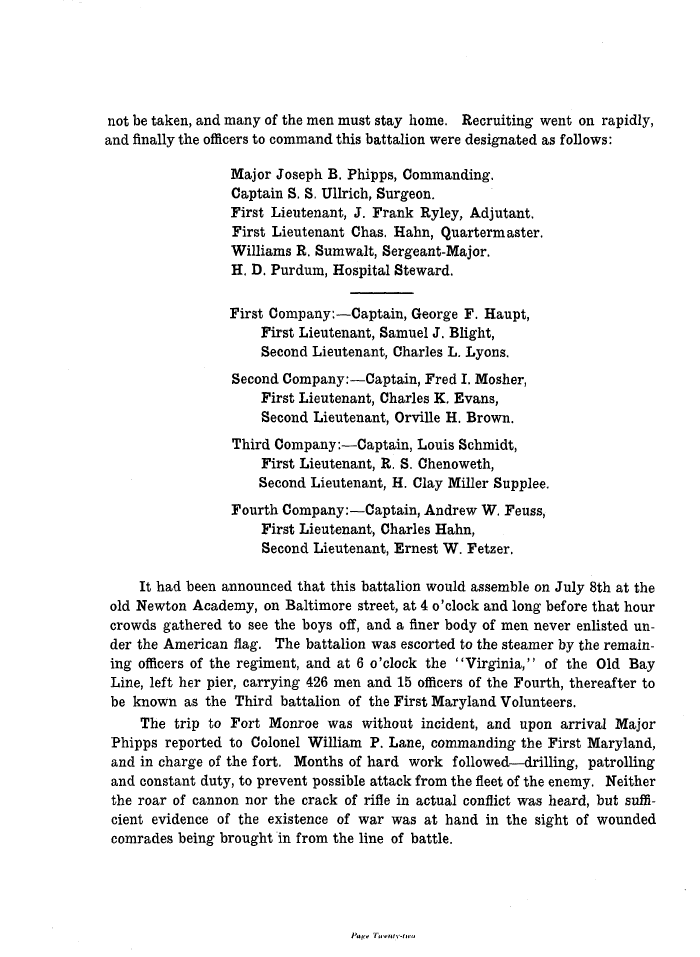 |
||||
 |
||||
| not be taken, and many of the men must stay home. Recruiting went on rapidly, and finally the officers to command this battalion were designated as follows: Major Joseph B. Phipps, Commanding. Captain S. S. Ullrich, Surgeon. First Lieutenant, J. Frank Ryley, Adjutant. First Lieutenant Chas. Hahn, Quartermaster. Williams R. Sumwalt, Sergeant-Major. H. D. Purdum, Hospital Steward. First Company:—Captain, George F. Haupt, First Lieutenant, Samuel J. Blight, Second Lieutenant, Charles L. Lyons. Second Company:—Captain, Fred I. Mosher, First Lieutenant, Charles K. Evans, Second Lieutenant, Orville H. Brown. Third Company:—Captain, Louis Schmidt, First Lieutenant, R. S. Chenoweth, Second Lieutenant, H. Clay Miller Supplee. Fourth Company:—Captain, Andrew W. Feuss, First Lieutenant, Charles Hahn, Second Lieutenant, Ernest W. Fetzer. It had been announced that this battalion would assemble on July 8th at the old Newton Academy, on Baltimore street, at 4 o'clock and long before that hour crowds gathered to see the boys off, and a finer body of men never enlisted under the American flag. The battalion was escorted to the steamer by the remaining officers of the regiment, and at 6 o'clock the "Virginia," of the Old Bay Line, left her pier, carrying 426 men and 15 officers of the Fourth, thereafter to be known as the Third battalion of the First Maryland Volunteers. The trip to Fort Monroe was without incident, and upon arrival Major Phipps reported to Colonel William P. Lane, commanding- the First Maryland, and in charge of the fort. Months of hard work followed—drilling, patrolling and constant duty, to prevent possible attack from the fleet of the enemy. Neither the roar of cannon nor the crack of rifle in actual conflict was heard, but sufficient evidence of the existence of war was at hand in the sight of wounded comrades being brought in from the line of battle. f*a!i* Tu>t?ntY-tn'u |